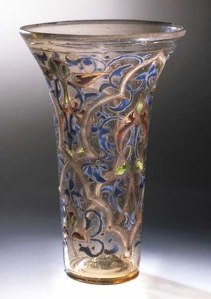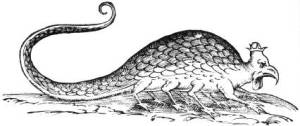
Merlin and Arthur by Gustave Dore
Next to the legendary kingdom of Urien‘s Rheged lay another, smaller kingdom. We don’t know what it was called, but in the third quarter of the 6th century, north-west Cumbria and the Solway area were ruled by a man called Gwenddoleu.
Investigating Gwenddoleu is like looking through cracked bottle-glass windows: you see a flash here, a hint there. Sometimes you see something clearly, and sometimes you squint and turn and it’s still just a suggestion. There are several sources which mention Gwenddoleu – the Annales Cambriae; the Welsh Triads and genealogies; the Merlin poems of the Black Book of Carmarthen; the Chronica Gentis Scottorum – but the references are veiled, fleeting, and sometimes of dubious date. Continue reading




 optional wings. They killed their victims with poisonous venom or by turning them to stone with a glance.
optional wings. They killed their victims with poisonous venom or by turning them to stone with a glance.